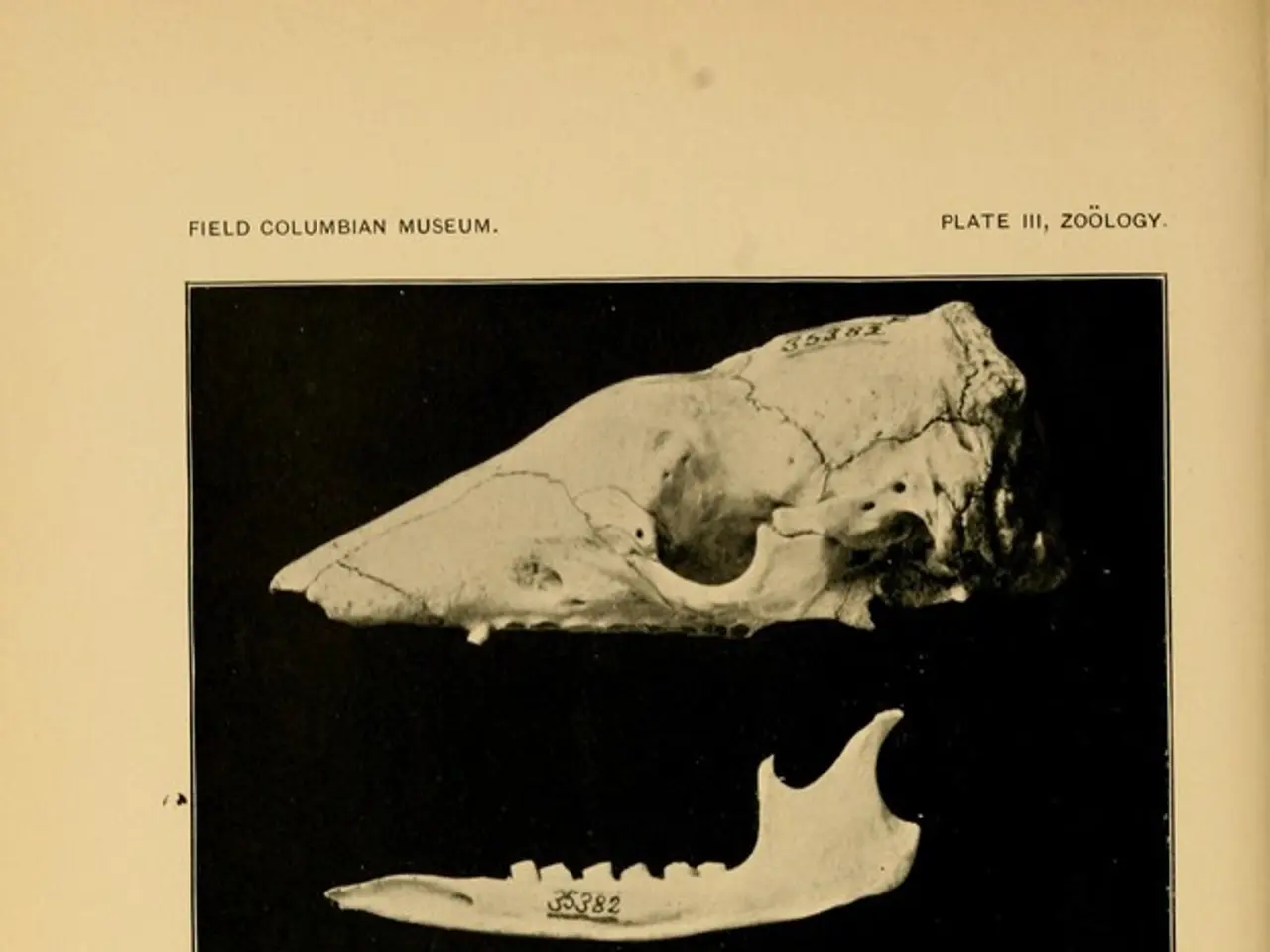Ancient Ice Mummy Unveils Complex Tattoo Art dating back 2000 years
In the frozen landscapes of Siberia, a groundbreaking study has shed new light on an ancient craft that was once believed to be mere decoration – tattooing in the Pazyryk culture. The findings, published in the prestigious journal Antiquity, reveal that the tattoos on a 2,000-year-old ice mummy were the result of a highly skilled and sophisticated technique.
The mummy, discovered in the permafrost-covered Altai mountains, boasts intricate animal and mythical creature designs on its forearms. These designs, which include leopards, stags, roosters, and a mythical half-lion, half-eagle creature, were uncovered using advanced imaging technologies like high-resolution digital photography and near-infrared photography.
The study reveals that tattooing involved a "hand-poking" technique using a needle-like instrument made from bone or horn to insert pigment, likely derived from burnt plant matter or soot. The tattoos, which were applied in multiple stages by at least two different artists, demonstrate a professional practice in tattooing during the Iron Age.
One fascinating aspect of the study is the subtle differences in tattoo quality and style on each arm, suggesting that either different tattooers or the same tattooer with improved skills were responsible. The remarkable preservation of the tattoos is attributed to the burial environment – deep burial chambers encased in Siberian permafrost – which prevented decay and allowed modern researchers to study ancient tattooing methods long after the individual's death.
The research provides profound insights into Iron Age tattoo artistry in Siberia and contributes to the broader understanding of ancient tattoo practices worldwide. It also offers a new way to recognize personal agency in prehistoric body modification practices. Tattooing in Pazyryk culture emerged as a specialized craft that demanded technical skill, aesthetic sensitivity, and formal training or apprenticeship.
Modern tattoo artists played a crucial role in examining the mummy's tattoos in unprecedented detail. The study suggests that the techniques and tools used for body art in ancient societies were more complex than previously thought.
This discovery underscores the rich artistic and cultural heritage of the Pazyryk people, horse-riding nomads who lived between China and Europe, and are known for their elaborate figural tattoos. The study has sparked renewed interest in the tattoos of the Pazyryk culture, with archaeologists like Gino Caspar of the Max Planck Institute of Geoanthropology and the University of Bern expressing interest in further research.
As we delve deeper into the past, it becomes increasingly clear that the art of tattooing was not just a form of decoration, but a skilled craft that required building skills and technical ability. This study serves as a testament to the enduring allure and sophistication of ancient tattoo practices.
References:
- [Link to the study in Antiquity]
- [Link to news article about the study]
- [Link to research paper on the study]
- [Link to news article about the mummy's tattoos]
- [Link to research paper on the tattooing techniques]
- The study published in Antiquity reveals that the intricate tattoo designs on a 2,000-year-old ice mummy discovered in Siberia demonstrate the high skill and sophistication of the ancient science of tattooing.
- The findings suggest that the future of science and archaeology may elucidate even more complexities in the technology and art of tattooing as previously thought, as seen in the study of the Pazyryk culture.
- Gino Caspar, archaeologist at the Max Planck Institute of Geoanthropology and the University of Bern, shows interest in further research on the tattoos of the Pazyryk culture, which are not only a part of the health-and-wellness and fitness-and-exercise practices but also a significant aspect of the science and culture of the ancient society.




